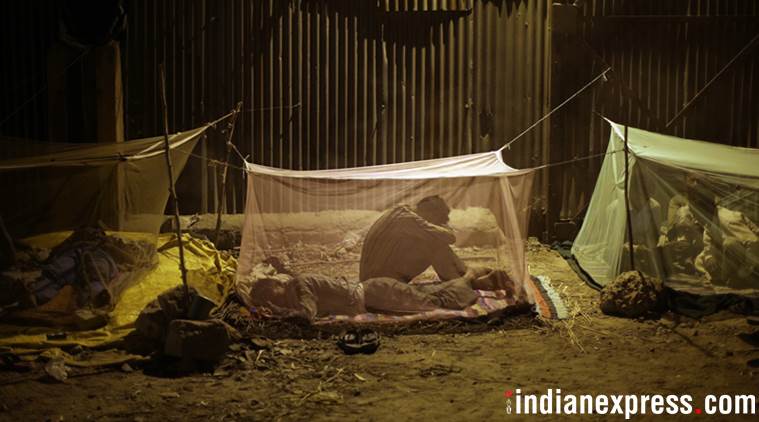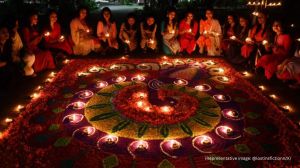 The draft rules also state that dearness allowance would be revised once before April 1 and October 1, while central government may revise the basic rate of floor wage ordinarily at an interval not exceeding five years. (Express photo by Oinam Anand)
The draft rules also state that dearness allowance would be revised once before April 1 and October 1, while central government may revise the basic rate of floor wage ordinarily at an interval not exceeding five years. (Express photo by Oinam Anand)
Net intake of 2,700 calories per day, 66 meters cloth per year per standard working class family, housing rent expenditure as 10 per cent of food and clothing expenditure, three adult consumption unit and a nine-hour working day are some of the factors that would determine the fixation of the national minimum wage, as per the draft rules released for public consultation by the Labour Ministry. The draft rules have been placed in public domain for a month beginning November 1.
The criteria for determining minimum wage are broadly similar to the scenario which existed before the passage of the Code on Wages, 2019. For instance, the calorie level of 2,700 per day remains the same as the level recommended by the Indian Labour Conference (ILC), held in 1957 as against a recommendation of 2,400 calories by the Labour Ministry’s Expert Committee for Fixation of National Minimum Wage, which submitted its report in February this year. Similarly, the draft rules retain the consumption units at 3, as against the recommendation of the expert committee of 3.6.

The draft rules also state that expenditure on fuel, electricity and other miscellaneous items to constitute 20 per cent of minimum wage and expenditure for children’s education, medical requirement, recreation and expenditure on contingencies to constitute 25 percent of minimum wage. For fixing the minimum wage, the draft rules have also divided the geographical regions into three categories — metropolitan area (area having a population of 40 lakhs or more comprised in one or more districts), non-metropolitan area (area having a population of between 10 lakhs to 40 lakhs) and rural area.
Story continues below this ad
The draft rules also state that dearness allowance would be revised once before April 1 and October 1, while central government may revise the basic rate of floor wage ordinarily at an interval not exceeding five years.
Experts said linking non-food expenditure such as housing rent allowance to food expenditure is a negative given that going ahead workers would migrate towards urban areas, where house rent would be a significant component of their expenses. Also, the geographical categorisation into metropolitan, non-metropolitan areas does not explicitly mention the differentiating factor for minimum wage and do not take economic factors such as slowdown into consideration as is the case in some BRICS and ASEAN countries.
“In today’s world, more people would be migrating to urban areas, where non-food expenditure would be higher and house rent would be a significant component. Also, as income levels increase, workers tend to spend more on non-food expenditure, so one shouldn’t link non-food expenditure to food expenditure and it should be rather based on evidence and actual behaviour of households,” Anoop Satpathy, Fellow, VV Giri National Labour Institute and head of the Expert Committee on Fixation of Minimum Wage said.
Satpathy added that the draft rules would enable discussion and new consensus needs to be arrived at tripartite level before finalising the rules for minimum wages. The draft rules state that the central government shall constitute the Central Advisory Board for fixation of the minimum wage which shall consist of 12 persons representing employers, 12 persons representing employees, independent persons including chairperson and three members of parliament, and five representatives of state governments as may be nominated by the Central Government. The central government may, for the purpose of fixing minimum wages under the code for the working journalist as defined in Working Journalists and other Newspaper Employees (Conditions of Service) and Miscellaneous Provisions Act, appoint a technical advisory committee to recommend the Central Government in respect of such fixation.

 The draft rules also state that dearness allowance would be revised once before April 1 and October 1, while central government may revise the basic rate of floor wage ordinarily at an interval not exceeding five years. (Express photo by Oinam Anand)
The draft rules also state that dearness allowance would be revised once before April 1 and October 1, while central government may revise the basic rate of floor wage ordinarily at an interval not exceeding five years. (Express photo by Oinam Anand)






























